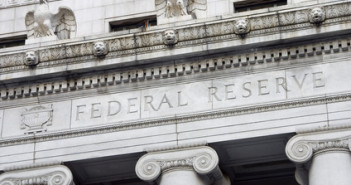Though a slightly more subdued day for equities than Friday of last week, North American stocks began the week on firm ground, with the S&P adding another 0.18%. A fairly light day in terms of economic data left investors searching for direction, and hints of a potential taper in December from Fed President’s Bullard and Fisher made sure to keep a lid on any unbridled optimism. St. Louis Fed President Bullard said that in response to an improving labour market, the FOMC could introduce a small trimming of asset purchases at the December meeting, as a slight taper wouldn’t make it impossible for the Fed to guard against a backslide in inflation if prices failed to pick up in 2014. A new poll from Reuters shows that the majority of analysts still expect the first taper to come in March of 2014, although there have been a number of analysts moving their predictions forward to December or January in response to the strong job numbers on Friday.
The Loonie was capped within a fairly tight range throughout the North American session, with USDCAD sucking back into the upward trend channel it broke through at the end of November. Further consolidation for the pair could be in the cards as technical indicators have turned bearish, and without any major economic catalysts until US Retail Sales later in the week, we could see USDCAD continue to concede some of its recent gains.
After data on the weekend showed China’s trade balance for November surged to its largest surplus since early 2009 due to an explosion of exports over the month, industrial production, fixed asset investment, and retail sales were all released overnight, and gave a mixed picture of growth during the month of November. Industrial Production and Fixed Asset Investment dipped to 10.0% and 19.9% respectively on a y/o/y basis, while Retail Sales rose to 13.7%, higher than the 13.2% analysts had been expecting. The Goldilocks data (not too hot and not too cold) generally paints a stable picture for the region, although we could continue to see a slight softening of growth as slowing industrial production acts as a weight on the economy. The Shanghai Composite ended its session essentially flat, while the Hang Seng had trouble pulling itself out of the red and closed down 0.28%. Commodities have done little to acknowledge the concern slowing industrial production could act as headwind for demand, with the front-month Gold contract increasing by 1.14% to change hands just below $1,250/ounce, and WTI sets its sights on a charge at $99/barrel after adding 1.35% so far this morning.
Turning our attention to the red-hot Sterling, manufacturing and industrial production for the month of October were released earlier this morning, coming out in-line with estimates and boosting optimism a sustained recovery in the UK will not have to rely solely on consumer spending. Industrial Production and Manufacturing Production both increased by 0.4% from September to October, and while a slower growth rate than the previous month, both signal a more balanced setting for economic growth than just strength in the housing market and discretionary spending.
The data comes on the heels of Bank of England Governor Carney yesterday raising some concerns about the strength of the UK housing market, and wanting to take the necessary steps to avoid the industry moving to “warp speed.â€Â While it appears as if the chief of the BoE is becoming more vigilant on the housing market like he did during his tenure in Canada, he also reinforced the notion that forward guidance had been helpful in holding down short-term interest rates, with no need at this point to alter current language. The pound is nudging up against its yearly high in the mid-1.64s against the USD, but struggling with this key resistance level with a strong supply of Sterling hits the market. The FTSE is under pressure like the rest of European equities, unable to translate the decent industrial production numbers into return for equity investors, dropping 0.33% heading into the North American cross.
Equity futures in North America have been treading water ahead of the opening bell, struggling to buck the trend of weak price action from around the globe. Yen strength throughout the European session has put pressure on the big dollar as the DXY drops south of the 80.00 handle, with the commodity currencies out performing on a weaker USD and the follow-through of strong price action from Oil and Gold. The Aussie has managed to levitate into the mid-0.91s against its American counterpart, while a bid tone in the Loonie has pushed USDCAD into the low-1.06s on lower than usual volumes. There is little on the way in terms of economic data for the remainder of the session, although we will get JOLTS Job Openings in the US for the month of October which could give the market a slight nudge in terms of direction on how the employment data is perceived.
Looking ahead to tomorrow, the lack of meaningful tier-one economic data persists, although we will get further releases from China, giving indications of how the government is doing when trying to reign in the lofty levels of borrowing fueled by easy credit conditions. New Loan figures and M2 money supply growth are due to be released, although the softer inflation print from Sunday night might foreshadow loan growth wasn’t as robust as expected, potentially providing the government with confidence progress is being made towards navigating a path towards more sustainable growth.
Further reading:
EURUSD: Bullish, Eyes Further Upside
EUR/USD Dec.10 – Steady Despite Weak Eurozone Numbers



